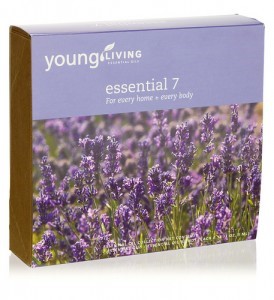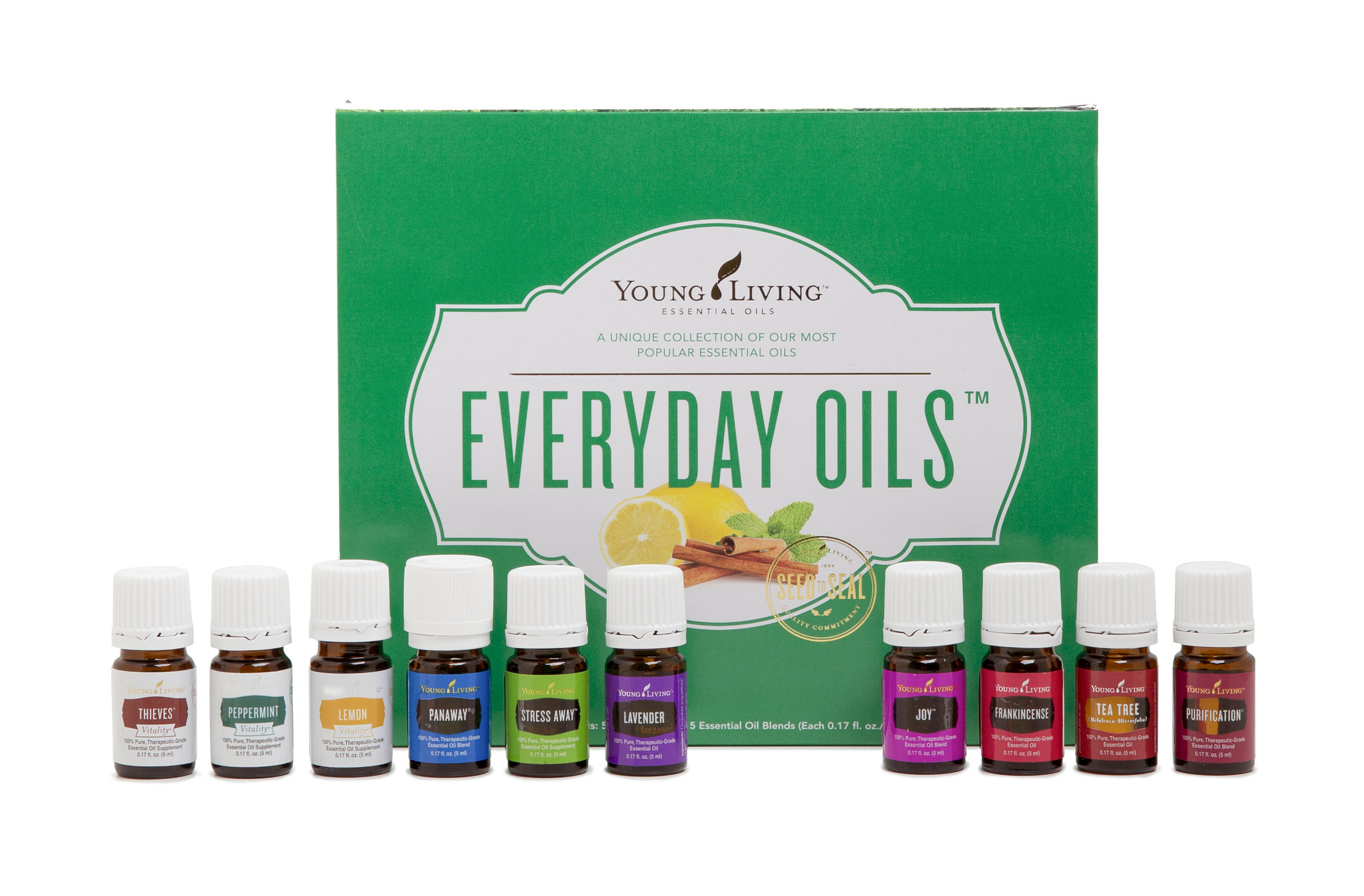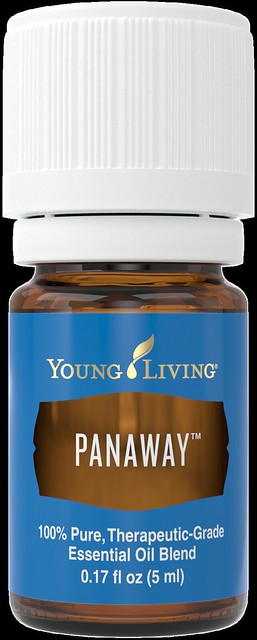Everyday Oils for Less Stress, Better Digestion, and More Energy: Joy, Peppermint, and PanAway
The Essential 7™ was a collection of seven of Young Living’s premiere single oils and oil blends, which are now found in Young Living’s Everyday Oils Collection. Doug Corrigan and Karen Boren are guest bloggers for a blog series sharing information that will teach you the many ways the oils in this collection can enrich your life.


Doug: Let me just start with a question to our readers. How many of you would like more energy? How many would like less stress? And here’s a big one, how many of you would like to be able to have better digestion, be happier after you eat, and then not be worried about some of the problems that bother many others?
If you answered yes to any of those questions, then you’re not alone. We did an interesting research project and found out that those things are among the top wellness demands in the world, specifically in the United States. People want more energy, less stress, and better digestion.
We broke down a gigantic portion of scientific literature and looked at what this literature says that essential oils do best. Then we started comparing what essential oils do best with the top areas of wellness demand. We found the two lists meshed very well, specifically with the essential oils for emotions, for aiding the digestive and nervous systems, and for moderating the stress response.
We’re so excited about this topic because the wellness demands are answered by the Essential 7 kit [now included in the Everyday Oils Collection].

Sharing Joy with friends
How Joy Relieves Stress
Karen: You can’t help loving Joy when you know the amazing oils that are in it: Bergamot, Palmarosa, Ylang Ylang, Tangerine, Rose, Geranium, Lemon, and Jasmine (which is technically not an essential oil but an absolute). I think that Joy is one of the most uplifting and calming blends that we have. It’s one that I personally love.
Doug: I like that you mention that an oil can be calming and uplifting. That’s the great thing about essential oils: they can do both things because the oils have what you term an “inner intelligence.” The oils are doubly powerful for the mind and emotions.
It’s interesting that Joy is an oil blend that you kind of come around to slowly a lot of times. Its impact can be so profound and eye-opening, yet some people say it’s just not their cup of tea. In my experience, it’s an oil blend that you grow into. Sometimes it’s an acquired fragrance that you fall in love with over time. You mentioned a tremendous story from one of your friends that really left an impression on you with regard to one of the most important of the oils in Joy: Rose essential oil.
Karen: This is really dear to my heart. I have a friend who turned to me for help when she was desperate. She had a grandson newly born and in intensive care. This little boy was receiving transfusion after transfusion but was not expected to live. She told me they had done everything possible at the hospital, and all she could think of was that she was not going to give up. She asked me for some Rose oil, and I gave her the almost-empty bottle I had at home. She went into the intensive care unit and placed one drop of rose oil over that tiny baby’s heart. Now certainly the doctors had done their part, but who can say if that one little drop of that joyful, high-frequency oil gave the uplift that helped her little grandson pull through?

Tense and tight neck muscles can relax after applying the soothing essential oil blend PanAway.
Doug: Now let’s talk a little about headaches. The most common type of headache is a vascular headache. Migraines are a form of vascular headache caused by constriction of blood vessels, which causes a lot of problems like blurred vision and, of course, extreme pain. Then there are muscle-type headaches and traction-muscle headaches, where there is tightening in the neck and other areas, causing pain. Inflammatory headaches are caused by areas that are inflamed, like sinuses, spine, neck, ears, even teeth; all of these can lead to headaches.
KAREN: There was a 1996 German study where peppermint was applied for tension-type headaches. The randomized, placebo-controlled, double-blind study showed that 10 percent peppermint oil applied locally was just as effective against the headache as 1000 mg of acetaminophen.
One of the things I like to use for headaches is PanAway because I’m not always so certain where the headache is arising from. I see the same response from Lavender and Peppermint. This is really a great yin-and-yang combination. If you’re unsure of the source of your headache or migraine, try a little of several oils.

KAREN: Peppermint is such a fabulous oil. I use it for a number of things. But I was really excited to read one of the studies on peppermint to learn about the increased mental clarity that it gave people. It significantly helped women who were typists so that they were able to type faster and more accurately Interestingly, lavender was the scent that produced the greatest effects for proofreading in males. Peppermint also improved performance for participants during memorization and alphabetizing tests.
DOUG: Peppermint can come to the rescue of people who have acid reflux or ulcers too. A 2014 study showed that 40 percent of the U.S. population has some kind of acid reflux problem at least once a week. And in 2018, 4.5 million people were affected by peptic ulcer disease. When we take Peppermint internally, what happens?
KAREN: A study done at a medical college in Bombay found that people who had dyspepsia (stomachache) from eating too much who were given peppermint oil had an accelerated gastric emptying rate. Peppermint helped the digestive tract move food through so that the people were comfortable again.
DOUG: Peppermint reduces cramping and, as a part of a natural cleansing program, acts in two ways. First, it is antispasmodic, stopping that wrenching feeling of spasms, and it takes care of that bloating and gassy feeling. Peppermint is maybe nature’s top carminative next to ginger. It actually quiets things, dispels gas, and neutralizes it. So many people are seeking natural solutions because the mainstream’s solutions are causing more trouble than they are helping. With digestive problems, they are going at it backwards, trying to block some natural processes in the body.
KAREN: Peppermint is a great, natural solution for stomach upsets. Proton pump inhibitors (as advertised on television) that stop the production of stomach acid have an unexpected adverse effect: pneumonia. A study in  the Journal of the American Medical Association showed that acid-suppressing drugs substantially increased the likelihood of recurrent pneumonia in elderly patients. Stomach acid kills swallowed germs in addition to digesting your food.
the Journal of the American Medical Association showed that acid-suppressing drugs substantially increased the likelihood of recurrent pneumonia in elderly patients. Stomach acid kills swallowed germs in addition to digesting your food.
Peppermint is multifaceted. Anyone who gets to that certain age where joints start creaking a bit will find that peppermint on the knees is just bliss! I love Balsam Fir for that as well, but Peppermint is really the one that has worked on my knees.
How PanAway Relieves Pain
Karen: I think a really key point for people to know is that oils impact us all a little differently. We need to find out which ones are the ones that work best for us. Like you, I’ve experimented and found out which oils are helpful for me.
Doug: Absolutely! We also all suffer at one time or another from joint or muscle discomfort. If you’re active or an athlete, it’s just a part of life. For that discomfort, it’s PanAway, hands down. A huge majority of Young Living members’ favorite products are PanAway and Deep Relief™. It’s an endless debate as to which one is preferred. But there’s a real case to say that it’s PanAway to the rescue in almost any of the instances we’ve talked about.
The mechanism that causes discomfort in tissue has many different pathways. And PanAway has a blend of powerful oils that are effective in those different areas. You have Peppermint, which has a really great effect because of the menthol that’s in it. But you also have Wintergreen, which has as its chief component methyl salicylate. Many of you will recognize methyl salicylate as the main ingredient in aspirin. So you have it in a natural form in Wintergreen without the drawbacks of a synthetic form like aspirin. Then there are two truly legendary oils: Clove and Helichrysum. Clove oil has a tremendous antioxidant capability and Helichrysum has free-radical scavenging effects, while it inhibits some enzymes that contribute to discomfort.
Karen: I think you hit a key point when you mentioned that Wintergreen has methyl salicylate; that means you can apply PanAway right to the spot where you have discomfort. It doesn’t have to go through your digestive tract like aspirin, which can cause stomach upset. No wonder PanAway is a favorite oil blend for many members!
Visit again next week to learn about more of the oils that are in the Everyday Oils Collection!


Would you like to share your thoughts?
Your email address will not be published. Required fields are marked *